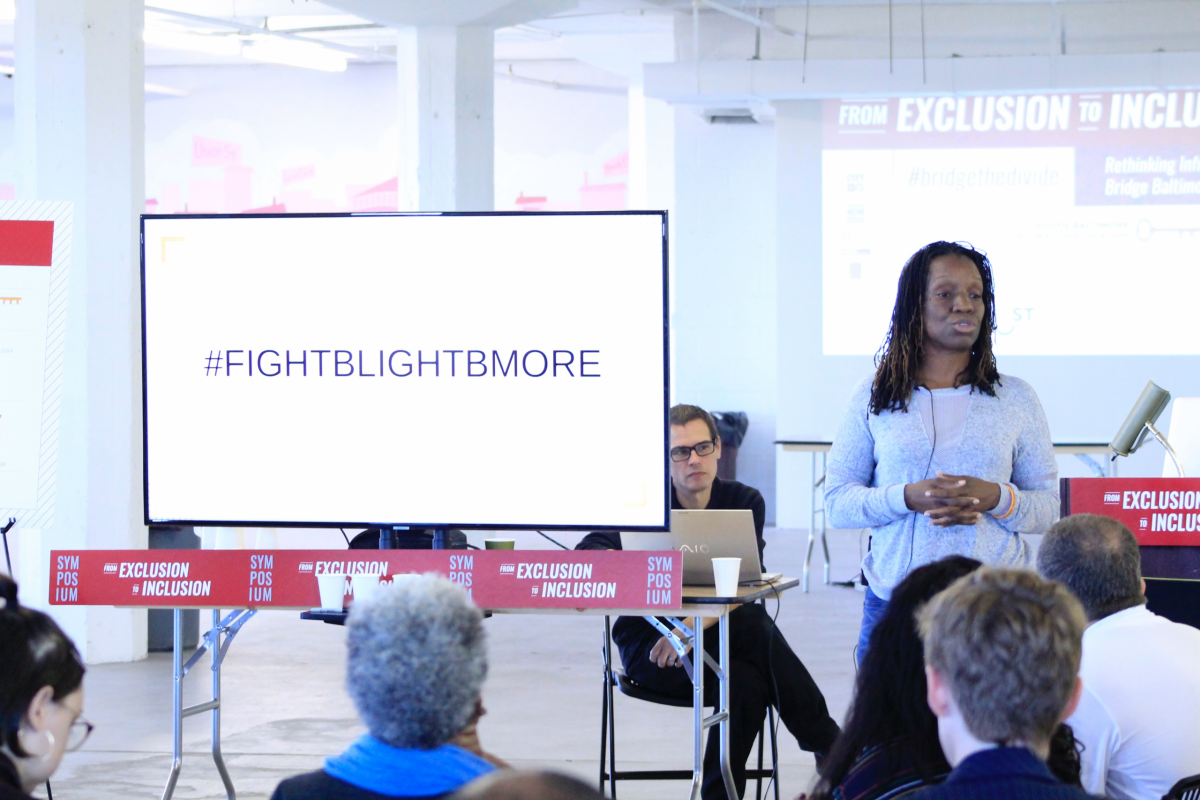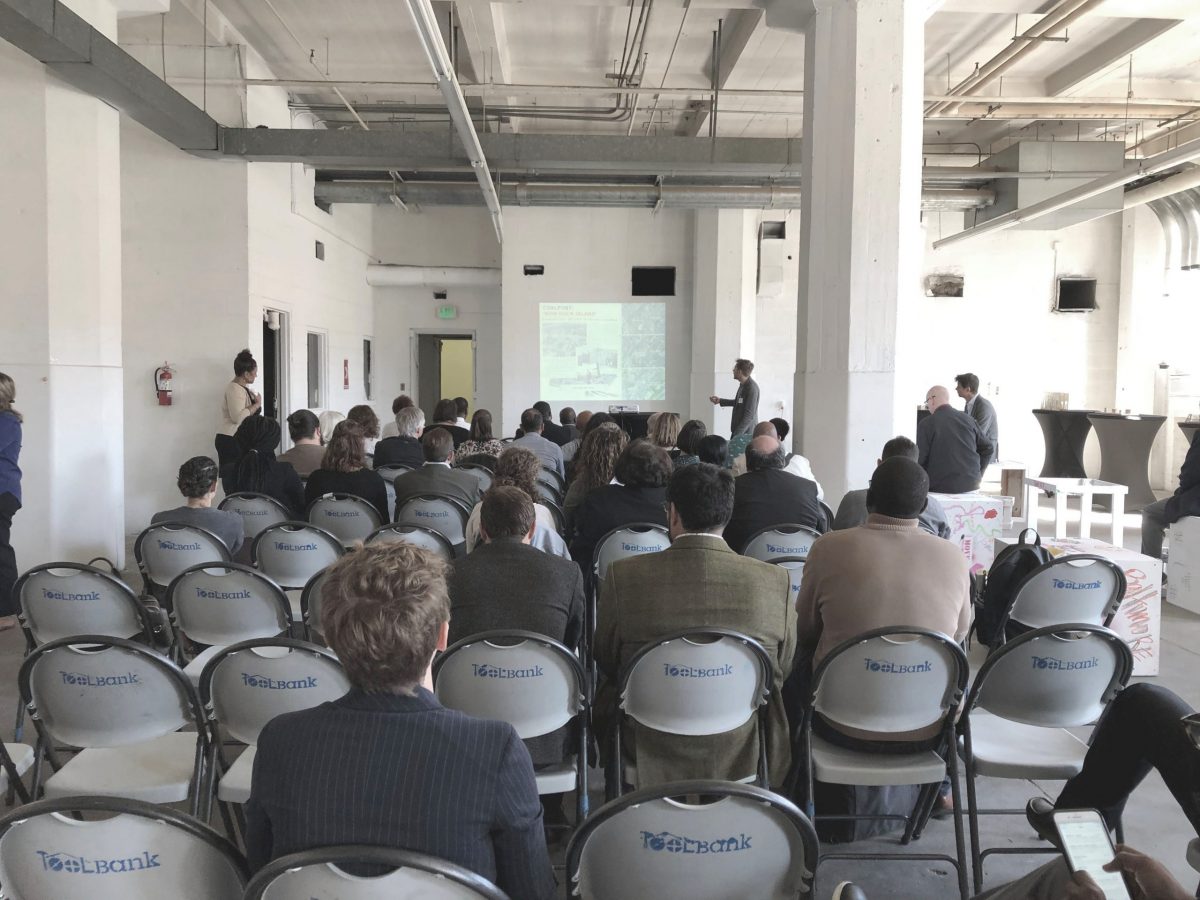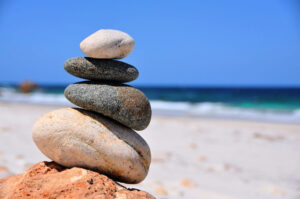By Cristina Murphy, Assistant Professor at Morgan State University, School of Architecture and Planning
The Framework
On the wave of the April 18th, 2019 “Redline in Baltimore Symposium”, where we offered a past to present journey of the transformation of place, race, and class in urban America, this second symposium, “From Exclusion to Inclusion: Rethinking Infrastructure to Bridge Baltimore’s Divides”, hosted on October 10th, explored how redlining policies and practices created systematic disparities and inequalities in American Cities. Specifically, the symposium provided a content framework and a practical solutions to those ‘lines’ that so strongly characterize today’s segregation.
So where has this all led to? What will be the next approach to this research? What have I learned and how can I give back to the city, the communities, and the residents of Baltimore?
After the symposium, it took me a while to gather all shared information and report the experience. This symposium was dense with content and it covered a wide spectrum of local and international spatial and social issues.
The Study
In the morning, Jeff Tomehave, a resident of Barre Circle, gave a lesson of place. He made sure we remember who was there first, where we come from, how places were created, and how people forced their way in while pushing others out. He conveyed a sense of ownership and belonging to a community that has been, at times, strong and homogeneous, and at other times fragmented and diverse.
Scholar Amanda Phillips de Lucas, local resident Janet Allen, and architect Klaus Philipsen, FAIA, provided us with three different voices and thoughts on the same subject. Amanda, the researcher of the group, presented a short and clear history of how Martin Luther King Jr. Boulevard (MLK) was conceived. The city that designers, engineers, and architects proposed for Baltimore is not the city we are living in today. “Visions of what could have been made us rush and lose sight of what had already happened on the ground,” she said. Immense effort, resources and technical expertise were required to build new infrastructure. However, the community was cut-off from the dialogue. The top-down approach for MLK would cut through vulnerable communities and displace them from the city grid. According to Robert Moses, the plan would displace poverty and minorities and be a remedy for the city’s ills. Without a doubt, Moses understood how highways affect how people move through the city and who gets to participate in new spaces. Can we reimagine MLK to fulfill the needs of local communities by including the residents in the conversation?
Janet Allen represented the community side of MLK. She spoke about the problem of homelessness along MLK and the lack of amenities and walkable roads. The community of Towns of the Terraces has been failed by the system. Their community became a “blight, dark corner with crime and drugs, bad schools, and people packing up to move into the counties.” What communities along MLK are asking for is a decent quality of life where “the Zip Code is a mailing destination and not a prediction of your life expectations or outcomes.”
Finally, architect Klaus Philipsen made the point that usually, the initial intentions of planners, architects, developers, and decision-makers are not cynical. “The intentions are good. The execution is something else.”
Journalist and author Antero Pietila presented on how communities in Southwest Baltimore have been historically excluded from the conversation of their futures. He also spoke about the continued risks of gentrification as University of Maryland expands westward. He also made the case for investment in public transit as a tool to build equity.
“How can we support community-oriented solutions to eliminate blight?” asked Nneka N’namdi, of the Living and Wealth Center for the Social and Economic Vibrancy. In order to empower communities and bring social and environmental justice, Nneka identifies, reports, and tracks blight. She emphasized how planners need to find solutions to vacancy and increase home equity for Baltimore residents. Blight is correlated with increases in crime, bad health, and poor performance in school. Organization of spaces is important for the welfare of communities. Nneka purchased some vacant buildings, looked for funds, and employed youth to identify blight and document abandonment while thinking of spatial reuse solutions.
This simple act of participation empowers people to take ownership of their neighborhood. One of Nneka’s initiatives is to identify dormant spaces and figure out how to reactivate them. The first step is to reactivate the people. Reactivation means re-injecting confidence and trust in people about their heritage and history. This binds people together and creates a sense of community. They also look at repurposing vacant lots with a program that addresses people’s needs. Through neighborhood hikes, Nneka provides a free exercise opportunity; historical mapping; and a sense of security. Overall, Nneka strategy is to empower residents and open up communities to allow exploration and discovery of opportunities within.
The Case Study
April de Simone and Braden Crooks, founders of Designing the WE, hosted a walkthrough of their “Undesigning the Redline” exhibit that highlights structural racism and inequities in America. Their lecture was on Spatial and Social Segregation: Design as an Intervention to Equity and Inclusion. How has street design and transit exacerbated segregation and disparity? Braden and April asked attendees, “How do we bring design into the community? How does design take a role to design for equality?”
The other two installations accompanying the symposium were PARK(ing) DAY 2019 in Pigtown and JUST Rotterdam + JUST Baltimore Studio Spring 2020.
In deciding how to develop their PARK(ing) Day installation, Morgan State University students were encouraged to investigate the range of social, cultural or ecological deficiencies in their particular urban setting. What is missing from your city or neighborhood and how can design serve, through a small project with a tiny physical footprint, the huge strategic purpose of reconfiguring our cities for the benefit of their inhabitants? Upon which principles of rigor, economy, tectonics, and composition does such a small project depend?
The JUST installation was about the work of graduate students at Morgan State University and Rotterdam Academy of Architecture and Urban Design (Rotterdamse Academie van Bouwkunst, RAvB) in Hillesluis in Rotterdam and Pigtown in Baltimore. Both classes traveled to each other’s cities to do site-specific intensive workshops together. The outcome of students’ ideas for both sites were exhibited.
Wouter Veldhuis, professor at the Rotterdam Academy of Architecture and Urban Design, brought the European perspective to the conversation: How can the United States be so behind when it comes to the built environment and equality?
Wouter claimed that Rotterdam started pretty much as Baltimore did but developed differently. Housing is a commodity here. Housing is treated as a need there. The concept is simple: the Dutch government guarantees a house for everyone, The middle and upper classes are taxed appropriately to contribute to good and accessible public transportation. Even so, globalization is affecting housing affordability in the Netherlands.
Rotterdam was recently declared the most architectural city in the world by Lonely Planet. However, the blue-collar Rotterdam is being pushed out. In ten years, 20,000 affordable housing buildings will be demolished and replaced by new developments that will put Rotterdam on the global stage. In so doing so, planners are removing, and risk flattening, the urban culture.
How can we change the city in a just way? Everyone has a right to the city. According to Wouter, the key to success is accessibility to housing and connections. City planners need to provide citizens with “generous public, healthy and connected space.” Just like many boulevards in the world that offer communities those “happy moments,” MLK could become a solid binder to a just city! This high street where Baltimore should display its presence, importance, and beauty, should be visible and alive; it should represent a true urban gateway. As Jan Gehl said, “Show me your street and I tell you what kind of city you are!”
Wouter and two MSU Students presented their work on Pigtown (Baltimore) and Hillesluis (Rotterdam) from the spring 2019 semester, purposely emphasizing opportunities rather than the negative and problematic aspects of designing in disadvantaged communities.
Wouter kicked-off his students’ work in Baltimore quoting a Ghent (Belgium) resident: “A good city to be poor.” This is the definition of what a city can be. “Not everyone can be rich and well educated but everyone deserves a good life in a good city,” Wouter said. Designers, developers, and decision-makers should trust residents and entrepreneurs to take care of their communities. Wouter concluded with a lesson for every city in the world: “Invest in reducing space for cars and transform high streets like MLK in a social-economic structure.”
MSU students Naomi Wong Hemme and Jordan Horne approached their design for a site and community in Rotterdam last semester by:
- Examining the shared values that all people look for in their communities and highlighting what ways they found to design for such conditions;
- Thinking about the role of an architect/designer in transforming a community. What approaches work best?
- Planning the use of existing activities within the community in order to bring functional purpose to community designs.
Finally, Barre Circle residents Bill Marker and Benjamin Hurlbut concluded the projects’ series by emphasizing the importance of creating a gateway to communities. Specifically, the MLK/Washington Blvd intersection is the main threshold of the neighborhood and we should invest to design that space.
The Evaluation
Seema Iyer, a professor at University of Baltimore, closed the lecture series. Seema started by defining space as determinant to one’s success in life.
Boldly stated, one’s address determines services (or lack of services), political representation,health, and, importantly, and market value. The address determines whether you can resell your house and what kind of retail opportunities there are.
Seema warned planners to be aware of this when designing and to consider that both spatial connections and built maintenance are key to any future sustainability. Baltimore has a Community Indicator System that defines how the neighborhood might change in the future: changes are inevitable and solely designing for the present serves no good to the continuity of a place. Vacancy is what creates poverty and poor communities dwell in areas that have a high rate of vacancy because those are the locations they can afford. Communities must remain above the 4% vacancy rate to remain stable.
Planners need also to be aware of creating places that are accessible and connected: segregation occurs when the community is cut off from the market and it is not visible. Neighborhoods need to be connected in order to be part of the network and grow. Designers need to plan for the future and make sure places stay occupied: what is your occupation strategy, how much is it accessible to mobility and capital investment, information, and connectivity?
Denise Johnson of CultureWorks, who introduced the Story Circle, led the last hour. Symposium participants gathered around a circle and shared stories of a place with the group. Narrations on homelessness, barriers, housing, schools, and the urge of belonging somewhere were shared. During the session, there was a great sense of understanding and respect for each story. Each story aimed to contribute to a greater, collective story of a place.
Currently, we are working on getting consensus from the communities impacted by MLK on various principles generated by the symposium. Once we get a general agreement and authorities’ support, we will be able to identify the next steps to perform within the Southwest Baltimore communities
Moving Forward
People are expecting something to happen! The ones who failed people like Ms. Allen are people like my guests and me: we come in with false promises, lots of talking but nothing really ever changes. Schools remain of poor quality, there are no libraries or places to sit down and eat… no supermarkets nearby! Communities remain divided and isolated: MLK still stands as an invisible wall after the Symposium.
Instead of talks, these communities need action, implementable proposals, sponsors, and businesses that can boost economic development. These people need a walkable and safe neighborhood that guarantees a decent quality of life. What Ms. Allen envisions is a community where Zip Codes are not an indicator of who people are and will become in the future.
Two weeks went by when I finally was able to upload the videos of the Symposium and review them. More weeks went by when I was finally able to verbalize my experience and put it into writing. Meeting with participants and speakers was of great help and I was finally able to funnel my thoughts into something I could work on.
When first arriving in Baltimore a few years ago, I identified Pigtown as my study area just because of its potential for rapid transformation. Bumping into the concept of Redlining made my reading of the area even more logical and strong. Connecting my study to MLK this fall was a way of providing a real, tangible and well-understood image of what has been one of the most significant and brutal tools to reinforce spatial and social isolation and segregation..
In the past, Redlining legitimized racist exclusionary practices by literally drawing red lines around areas deemed “high-risk,” largely due to the presence of African Americans and other non-white communities. Populations living in these neighborhoods were excluded from the mortgage market and unable to benefit from the growth of the middle class through property ownership that often characterizes the mid-20th century. Such targeting created a cycle of poverty and economic insecurity within many communities, the lasting effects of which can still be seen today.
Redlining in America perpetuates our most pressing social challenges today, and impedes the full potential of democracy to-date. Today, we have the intelligence and the tools to make a difference. Designers, city planners, and decision-makers need to consider the human dimension of their choices and the consequences of their designs.
One of the testimonials I collected was from a student who stated, “As a designer, I had always wanted to create spaces that promote a just society.” She continued by saying, “Symposiums like this provide a safe space to have candid, non-judgmental conversations among people,” and that she hoped that we “continue to lead this type of symposium, that dives into how designers and planners can create just communities or help remedy systematic injustice.”
The American dream is a work in progress (quoting Colson Whitehead) and one of the most candid takeaways from the prior symposium was that “All men are NOT created equal.” Although equality is something we shall continue to aspire to, the idea that we are all equal is not life affirming. Our differences, quirks and dissimilarities are what is interesting about us, and they are the life force of any society, especially America.
Systemic inequality entails the idea that some people are not still entitled to fairness and justice; that entire communities are cut-off from “natural” evolutionary growth and economic prosperity.
As an architect and aspiring urban planner, I identified infrastructure as one of the strongest dividers in this city.
Since I arrived in Baltimore, about two and a half year ago, I was fascinated by MLK and how that line could still exist and divide communities today. After learning about Redlining, I have to comprehend its existence and, today, I am happy we get the chance to dive deep into this line, which has the potential to bridge instead of separate people and spaces.
To Be Continued
If I allow myself to zoom in a bit further, I realize that a true improvement of this very large and significant urban divider ought to come from its users. Here, by users, I am not referring to the transient passersby, motorists, or the communities stretching alongside it and find themselves struggling when crossing it. What I refer to are the homeless people, that population that lives and works on MLK.
Would it not make sense that, in order to improve the boulevard and attempt to bridge the two Baltimores, we start from the very people who occupy it on a regular basis? The big idea here is that true inclusion starts with people who can make a difference in the city. Instead of improving MLK by reducing its infrastructural footprint and/or addressing existing or new amenities, we start by retaining the energy that is already there by organizing it in a more formal, pleasant, humane, right, righteous, just, and resourceful way. Instead of displacing the undesirable user, we keep the user in place, make it productive, and we make the road safe and desirable for the most.
Would not this be the first step toward a more comprehensive, inclusive transformation where the focus is not to displace people but to transform places so that each one of us can benefit from positive transformation?
If this lesson can be taught, can we envision a new Baltimore where social growth and place improvement can happen without forcing the indigenous population out of their homes?
Please stay tuned for more!
Videos of the Symposium
https://youtube.com/video/qHGlGLjfE-U/
https://youtube.com/video/ddXH79O8Dxg/
https://youtube.com/video/h63Wvo2kOSs/
https://youtube.com/video/GTDpuTOPnDM/
https://youtube.com/video/mq8I1fUpU0U/
https://youtube.com/video/R8HcBfpczYQ/
https://youtube.com/video/8ramXwzz8o0/
https://youtube.com/video/he1Hwdo1tGs/
https://youtube.com/video/mACs9N0jqDA/
https://youtube.com/video/7v5kIxekxT8/
Credits
Thanks to the Speakers:
Amanda Phillips de Lucas
Antero Pietila
April de Simone and Braden Crooks
Chris Regan
Denise Johnson
Janet Allen
Jeff Tomehave
Klaus Philipsen
Nneka N’namdi
Seema Iyer
Wouter Veldhuis
Partners:
1100 Wicomico Building
Baltimore Rotterdam Sister CityCommittee
AIA Baltimore
Nekimken
Video and Photography:
Anthony Quivers, Jewel Guy and Daniel DeVivo
This event would not have been possible without the kind contribution of the sponsors:
South Baltimore Gateway Partnership
Maryland Department of Housing & Community Development
Wexford Science + Technology
MUST Stedebouw
University of Maryland Baltimore and BioPark
Hord Coplan Macht
Greene Street Ventures
Toole Design
Thanks for The Greener Kitchen for providing delicious vegan food for the reception.
Marlieke van den Tillaar and Rachel Sengers for editing.
A special thanks to Rachel Sengers, Pamela Johnson, and Wouter Portegijs without which this event would probably not have happened.




